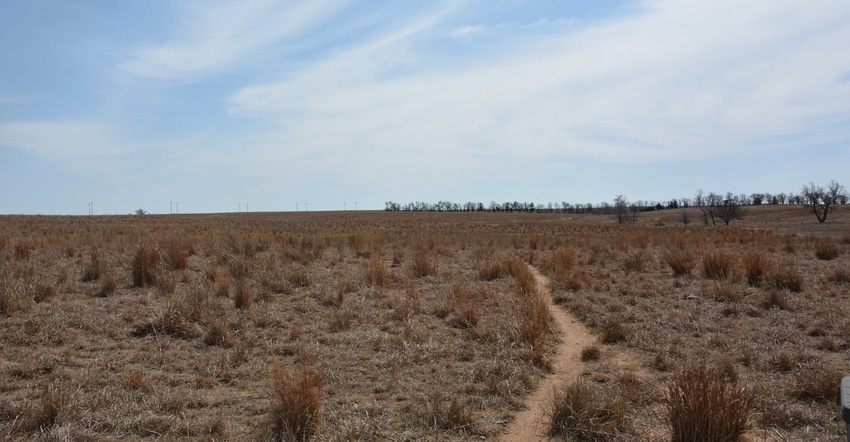
I got a call the other day from southeast Kansas farmer Dave Beason, whom I met a few years ago on a trip to Washington, D.C. with Kansas Farm Bureau county presidents. He had an interesting question about the monthly land sales column in Kansas Farmer.
“Why do you always feature the highest price sales in the headline?” he asked. “I think it kind of leaves people feeling like they’ll never be able to afford to buy land at prices like that. It would be nice to point out lower cost land. It can be a good thing that land is cheap enough for people to realize they could afford it.”
I had never given the standard practice of putting a star on the highest price sale a second thought. I inherited a format from my predecessor at Kansas Farmer 10 years ago and I never actually questioned whether or not the land values pros and cons should be changed up from time to time. Mostly, the realtors I talk to are looking at sales from a seller’s perspective and that makes the top price the most desirable.
But I think Dave could have a point. As a general rule, the most expensive land is either highly fertile, irrigated land, or land with suburban development and recreational potential. There are probably people out there who would be happy with some decent cropland and good pasture opportunities and would be more encouraged to see where farmland is selling for $500 an acre rather than $5,000.
Realtor Chris Faulkner, who conducts private auction land sales from Faulkner Real Estate and Auction in Ulysses, says he thinks that there are buyers motivated by where they can buy at the lowest price, but the bulk of buyers are more concerned about location and return on investment.
Faulkner says his company does handle some of the most reasonably priced land in southwestern Kansas and southeastern Colorado, but the bulk of buyers are looking to expand their own farming operation, and they are look for land contiguous to what they already farm or close enough for easy access.
That fact, he says, has helped keep land prices firm in spite of low commodity prices.
“We seem to have found our new normal and we’re holding there,” he says. “We are not where we were a few years ago, but that is a good thing. Prices had gone crazy there for a while.”
He does see the potential for an uptick in investment buying because of recent volatility in the stock market.
“Usually when we see the stock market getting kind of unstable, we see investors coming back in looking for something a little more solid,” Faulkner says. “That could give us a little boost.”
He says he has also seen some very large family operations selling off chunks of land because they don’t have a next generation wanting to take it over.
“We have some big irrigated acreage in Morton County — around 4,000 acres — that we are still looking for a buyer for,” he says. “That’s partly a geographic thing, but you’re talking an investment of
$8 million for the whole thing or even $3 to $4 million for significant tracts. That’s a huge investment.”
It is especially a big investment for a farmer who must borrow a significant portion of the money in a climate where interest rates have been ticking upward. That may change if investors divesting stocks in search of a more stable investment start cashing out and looking for land, he says.
“That hasn’t happened yet. Get back to me in a couple of years,” he says.
To Beason’s point, Faulkner says there is a fair amount of demand for land enrolled in the Conservation Reserve Program. That demand, he says, comes from buyers who want land they can realize some income from that will make a good country home or hunting land.
“Those buyers are usually looking for something that won’t require much work or investment in terms of active ag operation,” he says. “They like the contract that gives them guaranteed income without having to do much.”
He says that land has been selling in the $400 to $500 per acre price range in southwestern Kansas and southeastern Colorado. Those, he says, would be the kind of “bargain of the month” deals that certain buyers might be looking for.
Thanks, Dave Beason, for planting a seed for thought.
About the Author(s)
You May Also Like






